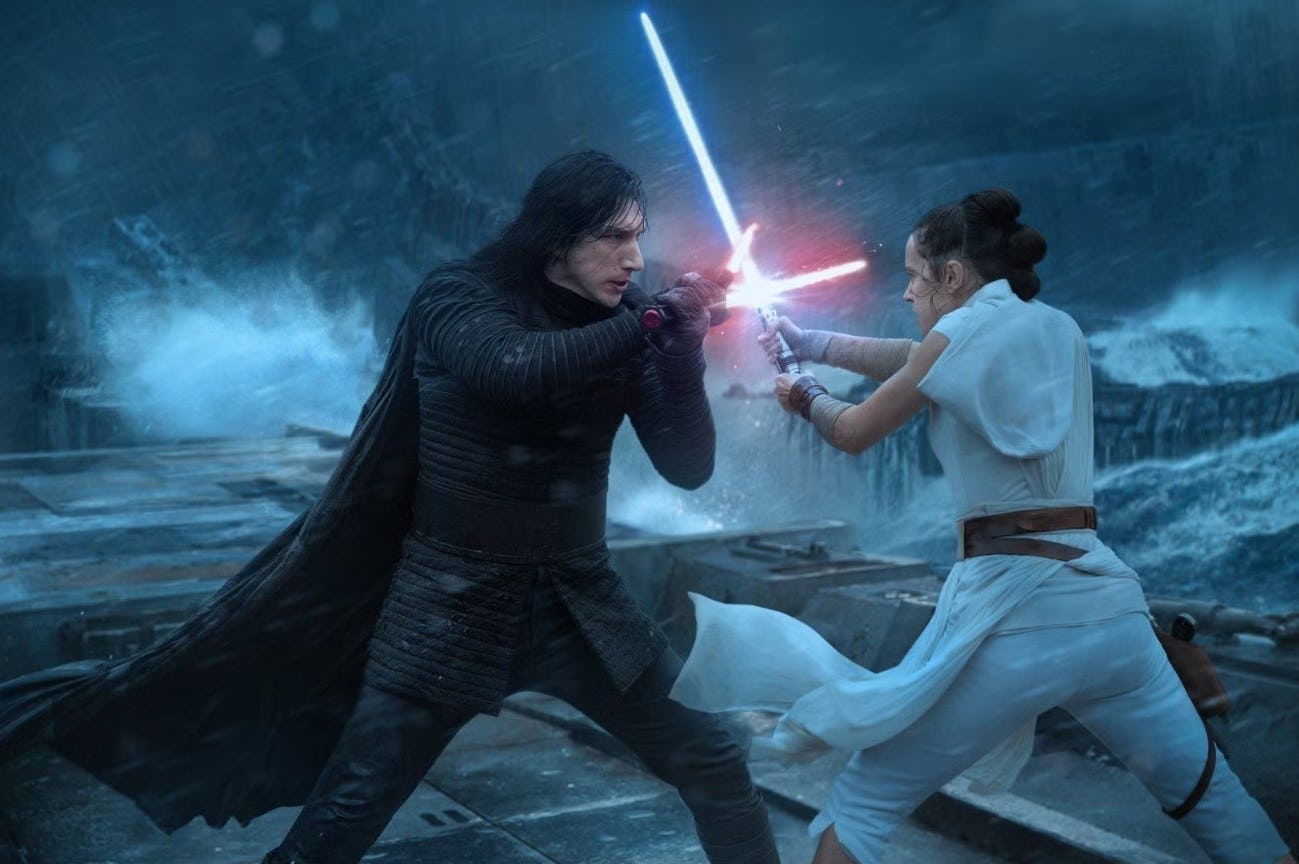
Boba Fett, one of the most iconic sci-fi characters ever created, only had four lines of dialogue across six-and-a-half minutes of screentime before he fell in a pit and perished.
That’s easy to forget, given that he became a staple of Star Wars toys and spinoffs, spawned his own TV show, inspired an entire fictional culture, and currently sports an 11,000-word Wikipedia page. But that such a minor presence gained such a sprawling reach simply because meeting fan demand for it proved profitable goes a long way towards explaining how, though he’s only on screen for a few minutes himself, Emperor Palpatine’s baffling role in Episode IX – The Rise of Skywalker has dominated the franchise in the five years since the sequel trilogy’s conclusion was disgorged into theaters.
“Somehow, Palpatine returned” has been mocked to Mustafar and back, but it’s a moment that’s touched nearly every decision the franchise has made since. The Mandalorian debuted a month before Rise as a series of one-off adventures wrapped around a broader plot, but eventually (d)evolved into a serialized saga forced to tediously explain the roots of Palpatine’s return. Meanwhile, Ahsoka tried to juggle both a mystical Force story and the return of a cartoon villain destined to set the stage for the First Order’s arrival. Neither made for particularly compelling television.
Even the shows that haven’t been Shanghaied into shoring up Skywalker’s plot have been undercut by the fact that we know the New Republic is doomed to a lifespan shorter than Star Wars itself has enjoyed. Sure, Andor is a taut and intelligent thriller, and Skeleton Crew is a charming family adventure, but all the hard work of their heroes will soon be wiped out by a cult of space fascists who materialize out of thin air. Villainous movements can and have re-emerged throughout real-world history, but they usually require a display of timidity from those who could’ve stopped them. And if there’s one word that defines Rise of Skywalker, it’s timid.
The central quest to locate Palpatine’s hidden fortress is a meandering road to a weightless final battle against copy-pasted villains. Legacy characters are awkwardly shoved into the limelight while most of the sequel trilogy’s own heroes are sidelined. Any apparent themes, like ex-stormtroopers throwing off their mental conditioning, are undercut so we can go blow up all the goons who should have been better at not being child soldiers. Any apparent stakes, like Rey’s escalating powers and emotional turmoil over Chewbacca’s demise, are immediately undercut. Chewbacca was just fine, everyone; Star Wars will never dare change on you again.

We’re adults, so we don’t need to relitigate The Last Jedi, but it must be noted that the sequel trilogy displayed a level of storytelling discordance shocking for a franchise with an economic engine larger than many nations. Like it or not, The Last Jedi suggested that the Jedi-Sith struggle was a relic of its time, and that now even complete nobodies like Rey can become heroes. Then Rise of Skywalker said, “Just kidding, that’s not true at all, Rey is a very special girl of magical destiny and the Skywalkers are the most important people in the universe, please love us again.” It was like watching a cruise ship try to pull a U-turn.
Maybe this is all unnecessarily harsh for a movie that featured a wonderfully silly cavalry charge across a spaceship’s hull, but Rise of Skywalker presaged an ossified future where franchises either fail to move on, or are held back by their own fans. Since Rise’s 2019 release, Marvel got lost in the multiverse and is trying to escape by bringing back Robert Downey Jr. and Chris Evans. The Wizarding World couldn’t figure out how to make a spinoff series work, so we’re just retelling Harry Potter’s story again. Several Lord of the Rings stars are returning for a new and comically inessential midquel based on an appendix. Even the Jurassic World movies felt compelled to bring back its old and tired legacy stars for an old and tired sequel.
Hollywood’s supposedly modern sequel and reboot obsession is nothing new — nine Dracula movies were pumped out in less than half the time it took to produce nine Star Wars films — but the sheer size of a multimedia empire like the Mando-verse has elevated the phenomenon to a grand scale. Yet that grandeur feels stilted because so much of it is shackled to the decisions of one lousy movie. It’s storytelling for the sake of fleshing out Wookieepedia pages and YouTube explainers, and Star Wars has helped make it an industry standard.

Now, however, Star Wars finds itself at another crossroads. The Mandalorian and Grogu is set to wrap up the Mando-verse and the New Republic era. With The Acolyte dead on arrival, Disney’s attempt to explore the High Republic on TV has failed. That leaves the most intriguing projects on the slate a prequel set in the distant past, and a sequel set in Rise’s aftermath. Little is known about either, but both can and should give the franchise a fresh start.
Star Wars’ status as both a children’s franchise and a billion-dollar merchandising empire capable of arousing bizarre passions has given it an odd place in pop culture, one where there will always be money in looking to the past. Star Wars, as much as we may love it, exists to make that money, and so the battle between bold storytelling and safe profiteering will usually be won by the latter. But after five years of the franchise being forced to revolve around a movie seemingly written to mollify its most obnoxious fans, the Skywalker Saga deserves to finally, truly rest. Otherwise, the Palpatines of pop culture will keep returning, and it will never be a surprise again.







